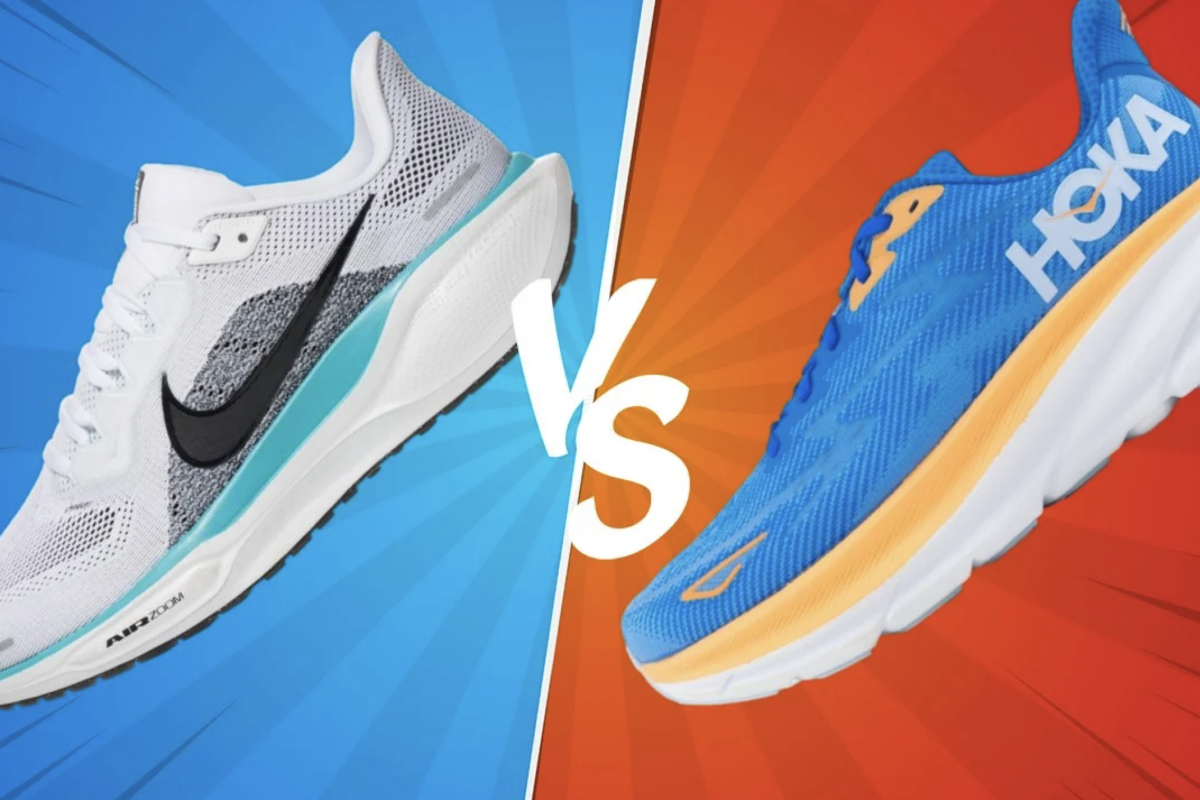In our current environment, there are brands taking the opportunity to revitalize. CoverGirl and Burberry are two brands implementing turnarounds. These two brands operate in different segments. But, these two brands have one thing in common: a focus on their brand core.
Revival strategies are for brands that have been going in the wrong direction at an accelerating pace. Revival strategies are for badly needed, urgent turnarounds. A turnaround strategy has a few critical steps. The first step is clear: Stop the bleeding. Of course, stopping the bleeding requires organizational and financial disciplines.
This article is part of Branding Strategy Insider’s newsletter. You can sign up here to get thought pieces like this sent to your inbox.
Along with organizational and financial disciplines, stopping the bleeding requires a maniacal devotion to the brand core. The brand must defend the core of its enterprise. The brand must emphasize its core, enduring brand truths. Focus on the core equities: internal cultural equities and external customer equities. Focus on what makes this brand special, its brand strengths and then mobilize the organization around these strengths. Focus on the core customer.
When a brand is in need of revitalization, begin by focusing on the core.
Keeping the brand core strong is essential to taking care of the brand’s health. And vice versa: to take care of the brand’s health, keep the brand’s core strong. The brand core must be re-energized, protected and strengthened. It is the brand core that will profitably finance a turnaround and provide the platform for the future. Begin by focusing on what the brand’s core customers love about the brand.
There are reams of data showing the value of a core customer. Seminal research from Frederick Reichheld on the lifetime value of a loyal core customer essentially showed that as brand loyalty increases, the likelihood of defection decreases. Mr. Reichheld concluded that reducing defections by 5% could increase profits by 25% and more. Other research indicates that loyal core customers are 8 times as valuable as those who just consider the brand.
The reverse is true as well. Losing a small percentage of core customers will account for a disproportionate amount of lost income.
Kohl’s and Target are learning this lesson at the moment. Loyal customers of Kohl’s want their Kohl’s back. Target customers may be yearning for a reignition of the brand’s provenance.
Stellantis, owner of Dodge, Jeep, and Chrysler, is planning to bring back customer-favored vehicles ignored during the tenure of its previous CEO. As The Wall Street Journal pointed out, “Jeep is reviving its Cherokee-sized SUV. Dodge is bringing back the gas-engine version of its Charger muscle car. And Ram is hitting pause on its all-electric pickup truck.” The head of Jeep North America said, “It’s no secret, the relationships that we have with our dealers, our suppliers, the general people who have been associated with us for the last few years, that needs a lot of love and attention.” Data reported in the Wall Street Journal indicate that “Stellantis had only two of the top 20 models sold in the U.S., according to data from industry research firm Motor Intelligence. Jeep and Ram didn’t even crack the top 10 among brands.”
Core customers already know what is great about the brand. The goal is to restore and repair their relationship to the brand, reinforce what they like about the brand, and encourage them to frequent the brand more often. Past data show that It costs 3-4 times as much to attract a new customer as it does to keep a customer loyal. Recently, data indicate that with multiple digital and platform options, these costs can range upwards of 7 times more to attract a new customer versus an existing customer.
It is easier to get a customer who already uses your brand to buy a little more often than to try to attract a new customer who does not use your brand at all. In a revitalization program, the brand’s objective must be to stop the shrinking of the customer base and to increase purchase frequency. A small increase in frequency can make a huge difference to brand viability and profitability. The road to enduring profitable growth rests on more customers who are more loyal and more profitable, generating more high-quality revenue growth leading to enduring profitable growth.
For example, in 2017, at a downward moment, craft website Etsy recognized the need to increase frequency among core customers. Etsy stated, “… we disclosed that about half of our buyers only buy once a year on Etsy. And, we really believe there’s an opportunity to bring those buyers, our existing buyers, back to buy more things on Etsy. So making it so that our existing buyers come back more than once, I think, is a big opportunity. Because half of them only come back once.”
Starbucks is running newspaper ads right now that welcome back core customers lost during the last CEO’s tenure. The ad copy tells lost customers that “The Starbucks you love is ready.” The copy tells us that the services we loved and that were removed are now back. The ad ends with the line, “Hello Again.”
It is a cliché to say covet your core customers, but it is critical.
At CoverGirl, CEO Sue Nabi, asked her team “… to think about what was at the core of CoverGirl’s identity.” Born in the early 1960s by Noxzema, CoverGirl was a brand used by, well, cover girls. CoverGirl promoted itself as “clean makeup” creating that “girl-next-door” fresh, youthful look. It was the look of models such a Christie Brinkley, Cheryl Tiegs, Cybill Shepherd and epitomized in the faces of Breck Girls. Later CoverGirl faces included Tyra Banks, Rihanna and Taylor Swift, according to The Wall Street Journal.
Times change. The power of cover girl models is now transferred to Influencers. And, CoverGirl is using these influential persuaders to rejuvenate the CoverGirl brand. CEO Nab has directed the team to recruit “thousands of influencers” who use their visibility on TikTok and Instagram to both demo and endorse CoverGirl products. The CoverGirl premise is the same. CoverGirl has just modernized to match the changed mindsets of contemporary core customers.
Burberry is taking a similar approach. The Burberry brand’s new CEO, Joshua Shulman, told The Wall Street Journal that in order to return to “sustainable, profitable growth” Burberry will be focusing on its core. “ Our recent underperformance has stemmed from several factors, including inconsistent brand execution and a lack of focus on our core outerwear category and our core customer segments.” According to comments from Burberry, The Wall Street Journal wrote that Burberry indicates the brand had “moved away from its core products over the past several years” resulting in “disappointing results.”
Yahoo finance reported these 2025 remarks from Burberry:
Burberry CEO, Joshua Schulman said: “Since launching Burberry Forward in November, we have moved at pace to advance our strategy to reignite brand desire, improve our performance and drive long-term value creation.
“We are encouraged by the response to our Always Burberry Weather outerwear campaign and Wrapped in Burberry festive campaign. These activations resonates with a broad range of luxury customers leading to an improvement in brand desirability and strength in outerwear and scarves.
“The acceleration of our core categories reinforces our belief that Burberry has the most opportunity where we have the most authenticity and that our strategic plan will deliver sustainable, profitable growth over time.””
Customers’ needs may alter. Markets may change. New products challenge the status quo. No matter how a brand landscape morphs, there are some evergreen brand marketing principles that must never be forgotten.
Adore the core is one of these essential principles: keep the brand core strong. A brand’s core must be continually re-energized, protected and strengthened. It is the brand core that will profitably finance a turnaround, keep a brand growing and provide a platform for enduring profitable growth. Ignore what core customers love about your brand at your peril.
Of course, brands must attract new customers while creating more brand loyalty among its core customer base. But, when a brand is in trouble, the first priority is to stop the hemorrhaging of the customer base. Love your core customers if you expect them to love you. Ultimately, the brand is more customers, more often, more brand loyal, more revenues, and more profitability. When a brand is losing share and sales, the first focus must be to shore up the core customer base. In other words, adore the core or your brand is done for.
Contributed to Branding Strategy Insider by: Joan Kiddon, Partner, The Blake Project, Author of The Paradox Planet: Creating Brand Experiences For The Age Of I
At The Blake Project, we help clients worldwide, in all stages of development, define or redefine and articulate what makes them competitive at critical moments of change. Please email us to learn how we can help you compete differently.
Branding Strategy Insider is a service of The Blake Project: A strategic brand consultancy specializing in Brand Research, Brand Strategy, Brand Growth and Brand Education




